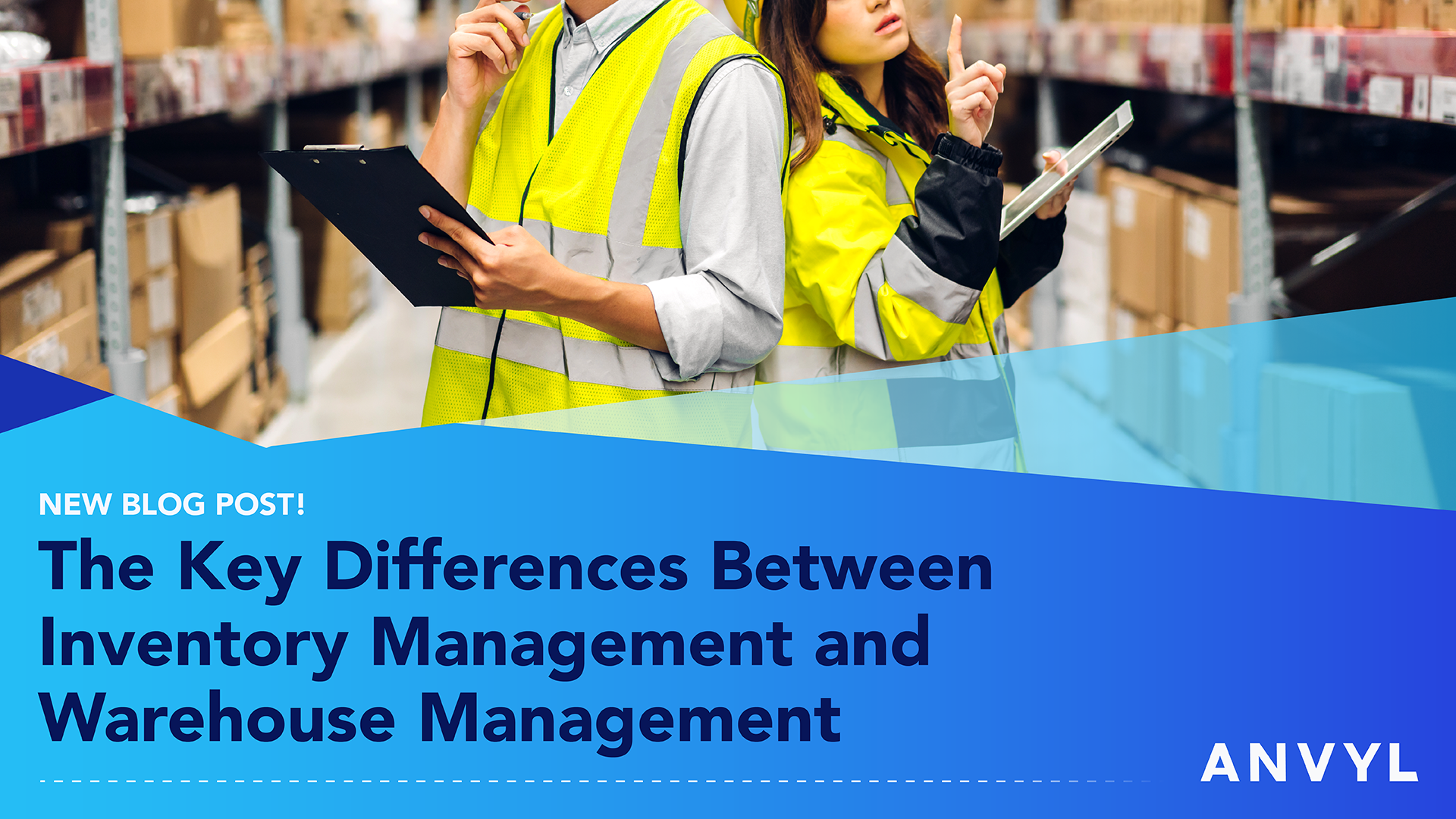The success of manufacturers today is highly reliant on two critical factors: inventory management and warehouse management. Indeed, since Covid-19 upended our entire global supply chain, organizations have been working against a backdrop where things like backlogs, quality issues, labor shortages, and even a scarce supply of space have dominated their mindshare.
Among the consequences is the need for better inventory management and warehouse management protocols. But there tends to be some confusion about what these practices actually mean, and how they differ from each other. Despite the fact that the goal of both is to measure and manage a company’s assets, they’re two fundamentally different things.
In this article, we’ll give an overview of what inventory management and warehouse management are, what inventory management systems (IMS) and warehouse management systems (WMS) do, and compare their similarities and differences. The outcome for the reader should be a better understanding of both practices, but also a better idea of how you can use inventory and warehouse management systems to meet production needs and uphold customer relationship management (CRM) commitments.
Let’s begin.
What is Inventory Management?
Inventory management refers to the process of ordering, storing, using, and selling a company’s inventory. Efficient inventory management is key to the success of every company which needs to provide some type of product to customers. No organization can function smoothly without effective inventory control — whether you’re a small local and growing business, an e-commerce shop, or a large global operation. In fact, tracking the inventory is as important as acquiring it.
What is an Inventory Management System (IMS)?
An inventory management system (IMS) helps forecast, order, receive, track, and distribute a company’s stock. Inventory includes parts and raw materials, works-in-progress, and finished goods. An inventory management system can help determine whether there is sufficient supply on hand to meet demand forecasts.
With e-commerce demands rising rapidly, the need to carefully manage inventory levels has become especially critical. Similarly, during peak shopping periods like Black Friday and Cyber Monday, as well as during the holidays, businesses typically find themselves under more pressure to handle inventory management properly. If they don’t, it can result in lost sales (and revenue) or money wasted on surplus inventory.
What is Warehouse Management?
Warehouse management focuses on organizing the day-to-day processes within a warehouse or distribution center. It ensures that the facility operates efficiently and meets its objectives.
What is a Warehouse Management System (WMS)?
A warehouse management system (WMS) is a software solution that provides visibility into the entire inventory and manages all supply chain fulfillment operations, from the distribution center to the point of sale (POS). With a warehouse management system (WMS), warehousing managers can streamline the supply chain and keep it moving freely, manage inventory, and optimize customer order fulfillment.
Inventory Management vs. Warehouse Management: Similarities and Differences
Inventory management and warehouse management are two important facets of managing stock. While inventory management usually provides a high-level view, warehouse management is more likely to focus on the details of moving stock. Here are some of their similarities and differences:
Inventory Management and Warehouse Management Similarities
- Both inventory management and warehouse management are concerned with the efficient storage, shipping, and ordering of necessary stock to keep operations running smoothly.
- Each system relies on a combination of radio frequency identification (RFID), barcode scanner tools, and software to improve accuracy and efficiency.
- These tools are used to provide visibility into stock within one warehouse or the entire company.
Inventory Management and Warehouse Management Differences
- Inventory management systems are usually simpler, managing the total amount of stock for one specific storage location. Warehouse management systems provide the ability to manage entire storage systems within a warehouse structure.
- Inventory management provides data, which is used to calculate sales trends, profit margins, and holding costs. In contrast, warehouse management uses that information to analyze sales trends, profit margins, and holding costs.
- Inventory management lets users know the amount of a specific product on hand, while warehouse management provides information on where to place the inventory and when to retrieve it.
Do I Need Both?
Yes, inventory management and warehouse management are integral components of your business’ broader business strategy. But that doesn’t necessarily mean you need both an IMS and WMS. The truth is, there are already multiple avenues of receiving inventory data that give you the information you need without duplicating work efforts.
If you already use an Enterprise Resource Planning (ERP) system, for example, then you can optimize it to gather real-time inventory data and automate key inventory management functions like stock purchasing, organizing, and transferring. Similarly, if your business utilizes a supply chain management (SCM) system, then you also have access to an intelligence layer that enables smarter decision-making within your warehouses.
Better yet, a SCM system that’s integrated with your ERP gives you end-to-end visibility into your entire supply chain, from purchase orders with your supplier to warehouse stock management.
Manage Your Warehouse Inventory More Efficiently With Anvyl
Managing a warehouse requires efficient, responsive management tools with features designed to improve productivity and profitability. The right inventory and warehouse management solutions can not only provide benefits for your warehouse management team, but for your suppliers and customers as well.
Anvyl is a PO management software that allows supply chain leaders to centralize their data, automate processes, and facilitate collaboration. We have extensive experience in helping our customers manage their supply chains better. Schedule a demo or learn more about how Anvyl can help your company optimize its inventory and warehouse management.



